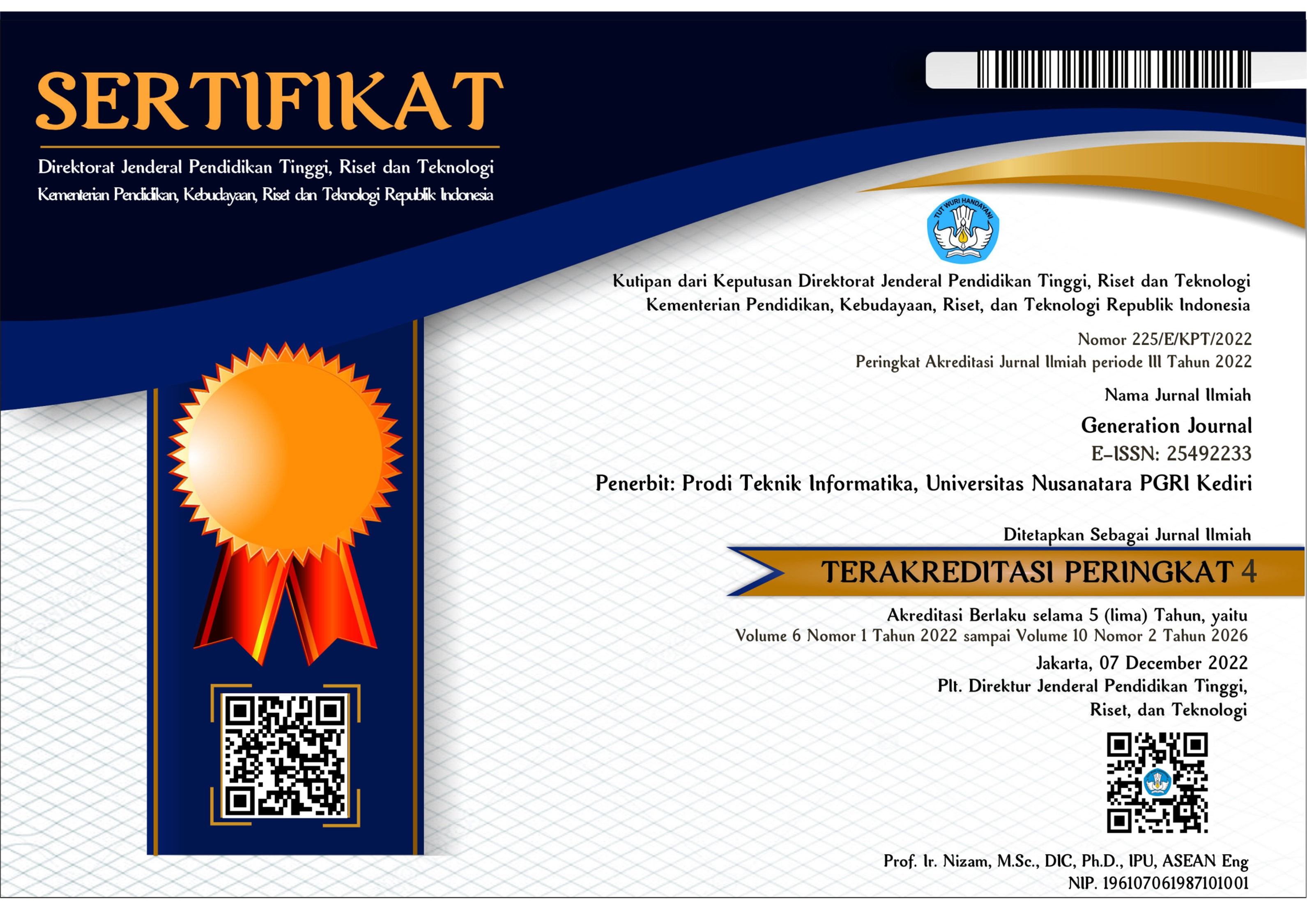Stunting Data Warehouse Modeling for Dashboards at the P2KBP3A Office
DOI:
https://doi.org/10.29407/gj.v9i2.25644Keywords:
data warehouse, nine steo kimbal, stunting, DP2KBP3AAbstract
The P2KBP3A Office of Kediri Regency is one of the agencies that handles stunting issues. To collect data on children under two years of age (baduta) in each village, this agency is assisted by cadres in each region. The data that has been collected certainly needs to be processed in order to produce information that is useful for decision makers in determining policies. Processing large amounts of data requires data warehouse technology as one of the solutions. In designing this data warehouse, the Nine Step Kimball method with the Star Schema diagram model was used. With this data warehouse, information on the number of stunting cases in each area can be obtained, starting from the sub-district level, village, to hamlet. Additionally, data can also be viewed based on the target and the status of that target, whether it is normal, stunted, wasted, stunted and wasted, or pre-stunted
References
[1] Angelya, T., Rahman, A., & Pradesan, I. (2023). Perancangan Data Warehouse Online Analytical Processing (OLAP) Data Hasil Kerja PT. ABC. MDP Student Conference, 2(1), 656–664. https://doi.org/10.35957/mdp-sc.v2i1.4241
[2] Setiyawati, M. E., Ardhiyanti, L. P., Hamid, E. N., Muliarta, N. A. T., & Raihanah, Y. J. (2024). Studi Literatur: Keadaan Dan Penanganan Stunting Di Indonesia. IKRA-ITH HUMANIORA : Jurnal Sosial Dan Humaniora, 8(2), 179–186. https://doi.org/10.37817/ikraith-humaniora.v8i2.3113
[3] Yuwanti, Y., Himawati, L., & Susanti, M. M. (2022). Pencegahan Stunting pada 1000 HPK. Jurnal ABDIMAS-HIP : Pengabdian Kepada Masyarakat, 3(1), 35–39. https://doi.org/10.37402/abdimaship.vol3.iss1.166
[4] Sugiyono, D. (2010). Metode penelitian kuantitatif kualitatif dan R&D. In Penerbit Alfabeta. Alfabeta.
[5] Yulia, N., Saragih, R., & Ambarita, I. (2021). Data Mining Pengelompokan Anak Stunting Berdasarkan Usia, Penyebab dan Pekerjaan Orang Tua Dengan Menggunakan Metode Clustering (Stud Kasus : Dinas Kesehatan Kabuoaten Langkat). Seminar Nasional Informatika (SENATIKA), 296.
[6] Pamungkas, M. P., Aditya, S., & Wijaya, A. (2024). Pemodelan Data Warehouse Distribusi Produk Kesehatan di PT. Bima Sakti Medica. Jurnal Ilmiah : JSSI.
[7] Miranda, E. (2016). Perancangan model data warehouse kesehatan (pengamatan: unit farmasi dan penyakit dalam klinik abc). Jurnal Teknik dan Ilmu Komputer, 81-90.
[8] Setiaji, B., & Pramudho, P. K. (2022). Pemanfaatan Teknologi Informasi Berbasis Data Dan Jurnal Untuk Rekomendasi Kebijakan Bidang Kesehatan. Jurnal Inovasi Riset Ilmu Kesehatan, 166-175.
[9] Atmojo, W. T., Ocktavia, S., & Ayunda, A. T. (2024). Implementasi Nine Step Methodology Dalam Perancangan Data Warehouse. Jurnal TIKomSiN, Vol. 12(1), 18-25. doi:https://doi.org/10.30646/tikomsin.v12i1.822
[10] Sari, R. M., Rizka, A., Putri, N. A., & Efriana, A. (2024, November). Penerapan Data Mining Untuk Analisis Stunting Pada Balita. Jurnal Minfo Polgan, 13(November), 1717-1728. doi:: https://doi.org/10.33395/jmp.v13i2.14218
[11] Dewanti, C., Oktavian, I., & Nurohman. (2024, Agustus). Sistem Informasi Monitoring Potensi Stunting. Jurnal Ilmiah Rekayasa dan Manajemen Sistem Informasi, 9, 58-63.
[12] Lestari, A., Tina, R. R., Achmad, F., Fathurrahmani, & Noor, A. (2024). Perancangan Sistem Informasi Deteksi dan Pemantauan Stunting Balita di Desa Melalui SIHARAPAN. CSRID Journal, 16(2), 91-106. doi:https://www.doi.org/10.22303/csrid.1.1.2022.01-10
[13] Purwant, J., & Renny. (2021). Perancangan Data Warehouse Rumah Sakit Berbasis Online Analytical Processing ( Olap ) Hospital Design Of Data Warehouse Based On Online Analytical Processing ( Olap ). Jurnal Teknologi Informasi dan Ilmu Komputer (JTIIK), 8(5), 1077-1088. doi:10.25126/jtiik.202184842
[14] R. Kimball, M. Ross, and A. A. Anisimov, The Data Warehouse Toolkit: The Complete Guide to Dimensional Modeling (2nd Edition), vol. 32, no. 3. 2003. doi: 10.1145/945721.945741.
Downloads
Published
Issue
Section
License
Copyright (c) 2025 Arik Sofan Tohir, Suryono Suryono

This work is licensed under a Creative Commons Attribution-ShareAlike 4.0 International License.
Authors who publish with this journal agree to the following terms:
- Copyright on any article is retained by the author(s).
- The author grants the journal, the right of first publication with the work simultaneously licensed under a Creative Commons Attribution License that allows others to share the work with an acknowledgment of the work’s authorship and initial publication in this journal.
- Authors are able to enter into separate, additional contractual arrangements for the non-exclusive distribution of the journal’s published version of the work (e.g., post it to an institutional repository or publish it in a book), with an acknowledgment of its initial publication in this journal.
- Authors are permitted and encouraged to post their work online (e.g., in institutional repositories or on their website) prior to and during the submission process, as it can lead to productive exchanges, as well as earlier and greater citation of published work.
- The article and any associated published material is distributed under the Creative Commons Attribution-ShareAlike 4.0 International License













